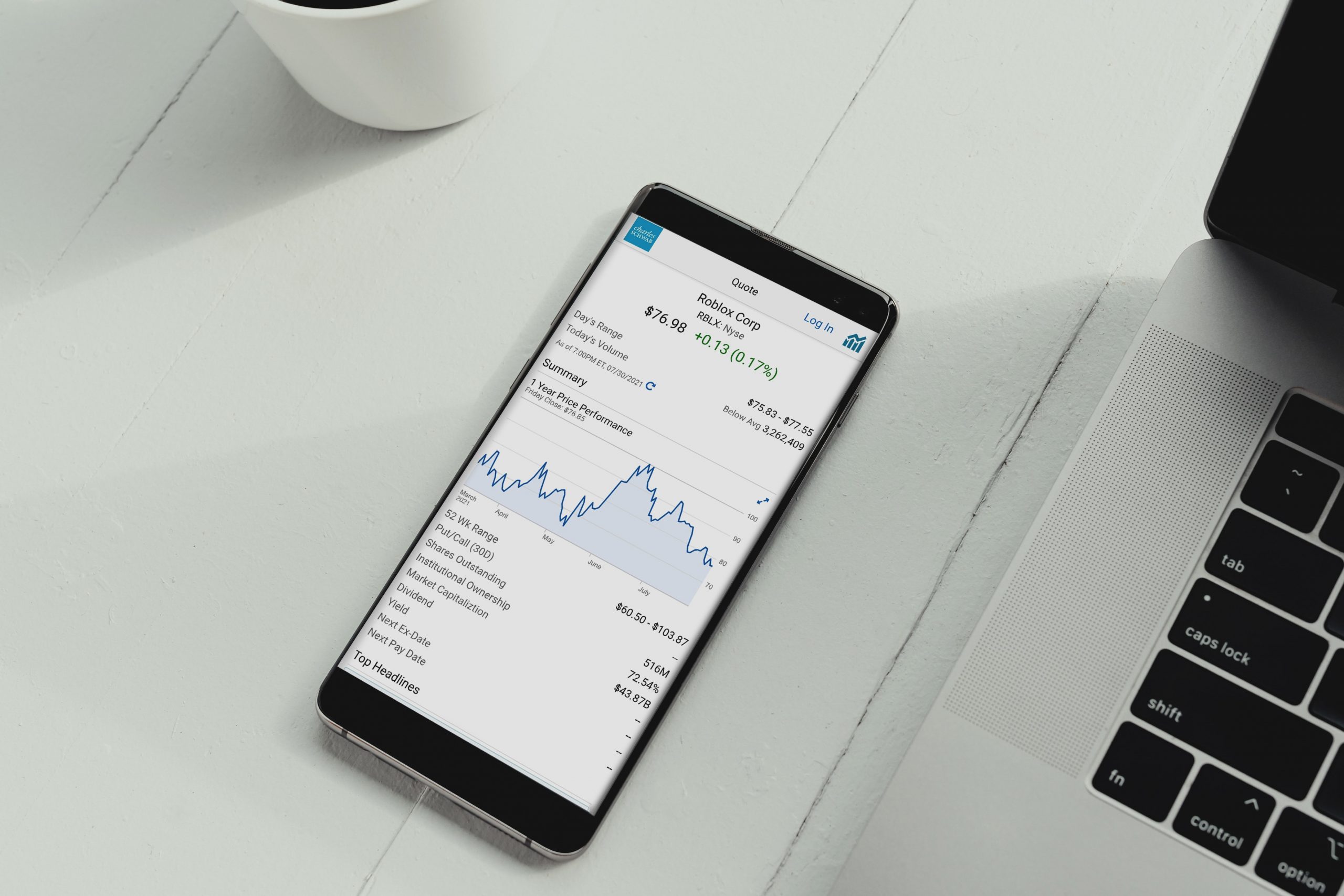We at Wesoftyou understand the growing significance of mobile apps in the finance industry. As technology continues to evolve, more and more people are relying on mobile apps for their financial needs. In this step-by-step guide, we will walk you through the process of developing a mobile app for finance, from understanding the basics of mobile app development to launching and marketing your app. So, let’s dive in!
The Basics of App Development
Before you embark on the journey of developing a finance app, it’s essential to grasp the fundamentals of mobile app development. From our experience, we have seen that a successful finance app combines seamless functionality with a user-friendly interface. By understanding the basic principles of mobile app development, you can ensure that your app meets the requirements of your users.
One of the first things you need to consider is the importance of mobile apps in the finance industry. Mobile apps have become an integral part of people’s lives, allowing them to manage their finances on the go. Whether it’s checking account balances, making payments, or tracking expenses, finance apps provide convenience and accessibility.
Moreover, the rise of smartphones and the increasing penetration of internet connectivity have contributed to the exponential growth of mobile app usage. According to recent statistics, the number of mobile app downloads worldwide is projected to reach 258 billion by 2022. This staggering figure highlights the immense potential and demand for finance apps in the market.
Importance of Finance Apps
Mobile apps have revolutionized the way we manage our finances. They offer real-time access to financial data, allowing users to stay updated and make informed decisions. Furthermore, apps provide a secure environment for financial transactions, eliminating the need for physical visits to the bank.
Imagine being able to transfer funds, pay bills, or even apply for a loan with just a few taps on your smartphone. Finance apps have made these tasks effortless and convenient, empowering users to take control of their financial lives. With features like push notifications, users can receive instant updates about their account activities, ensuring they never miss an important transaction.
From a business perspective, mobile apps offer tremendous opportunities for financial institutions. They can enhance customer engagement, increase loyalty, and streamline processes. With a finance app, you can provide personalized services and cater to the specific needs of your target audience.
For instance, you can leverage data analytics to gain insights into user behavior and preferences. This information can help you tailor your app’s offerings, such as recommending personalized financial products or providing targeted financial advice. By understanding your users’ needs and delivering a seamless experience, you can establish a strong brand presence and gain a competitive edge in the market.
Key Features of a Successful Finance App

When developing a finance app, it’s crucial to include key features that not only meet user expectations but also set your app apart from the competition. From our experience, we’ve identified some essential features that make a finance app successful:
- Account Aggregation: The ability to link multiple accounts and view comprehensive financial information in one place.
- Budgeting and Expense Tracking: Tools that help users set budgets, track expenses, and analyze spending patterns.
- Bill Payment: Integration with payment gateways to facilitate bill payments directly from the app.
- Investment Tracking: Features that allow users to track and manage their investments in real-time.
- Security: Robust security measures such as two-factor authentication and data encryption to protect user information.
Account aggregation is a powerful feature that enables users to have a holistic view of their finances. Instead of logging into multiple banking apps or websites, users can consolidate their accounts in one place. This convenience saves time and provides a comprehensive overview of their financial health.
Budgeting and expense tracking tools empower users to take control of their spending habits. By setting budgets and tracking expenses, users can gain insights into their financial patterns and make informed decisions. These tools can help users identify areas where they can save money and achieve their financial goals.
Bill payment integration simplifies the process of paying bills. Users no longer need to visit different websites or remember multiple login credentials. With just a few taps, they can settle their bills directly from the finance app, ensuring timely payments and avoiding late fees.
Investment tracking features allow users to monitor their investments in real-time. Whether it’s stocks, mutual funds, or cryptocurrencies, users can stay updated on their portfolio’s performance. These features often include interactive charts, historical data, and customizable alerts, enabling users to make informed investment decisions.
Lastly, security is of utmost importance in finance apps. Users entrust their sensitive financial information to these apps, and it’s crucial to provide a secure environment. Two-factor authentication adds an extra layer of security by requiring users to provide additional verification, such as a fingerprint or a unique code. Data encryption ensures that user information remains confidential and protected from unauthorized access.
Plan Your Finance App
Now that you have a solid understanding of the basics, it’s time to plan your finance mobile app. This phase is crucial as it sets the foundation for the development process. From identifying your target audience to defining your app’s core functionality, proper planning ensures your app meets the needs of your users.
Planning a finance mobile app involves more than just the technical aspects. It requires a deep understanding of your target audience and their specific needs. By taking the time to gather insights and conduct market research, you can gain valuable information about your potential users.
When identifying your target audience, it’s important to consider factors such as age, occupation, and financial goals. Are you targeting millennials who are looking for budgeting tools? Or are you focusing on business professionals who need expense tracking features? Understanding your audience will help you tailor your app to their unique requirements.
Once you have a clear picture of your target audience, you can start defining your app’s core functionality. This involves determining the main purpose of your app and the features that will support that purpose. It’s crucial to strike a balance between providing enough functionality to meet your users’ needs and avoiding overwhelming them with unnecessary features.
One way to define your app’s core functionality is by considering the pain points of your target audience. What are the challenges they face when it comes to managing their finances? Are they struggling with budgeting, saving, or investing? By addressing these pain points, you can create a finance app that truly solves their problems.
Remember, simplicity is key when it comes to designing a finance mobile app. While it may be tempting to include every possible feature, it’s important to prioritize and focus on the essential functionality. This will not only make your app easier to use but also increase user satisfaction.
By planning your finance mobile app carefully, you can ensure that it resonates with your target audience and meets their specific needs. Take the time to gather insights, define your app’s core functionality, and prioritize simplicity. With a well-planned app, you’ll be on your way to providing a seamless and valuable experience for your users.
Design Your Finance App
Once you have a solid plan in place, it’s time to move on to designing your finance app. Design plays a crucial role in the success of your app as it directly influences user engagement and satisfaction. From choosing the right user interface to incorporating financial tools and calculators, your app’s design should be intuitive and user-friendly.
Designing a finance app involves careful consideration of various factors to create an optimal user experience. Let’s dive deeper into some key aspects of app design that can make your finance app stand out.
User Interface and User Experience Principles
Your finance app’s user interface should be visually pleasing and intuitive. Users should be able to navigate through the app effortlessly and find the information they need quickly. From our experience, we have seen that a clean and minimalist design works well in the finance industry.
When designing your app’s user interface, consider using a consistent color scheme and typography to create a cohesive look and feel. This will help establish your app’s brand identity and make it easily recognizable. Additionally, breaking down complex information into digestible chunks will make it easier for users to understand and engage with your app.
Visual cues and icons can also play a significant role in guiding users and enhancing their experience. By incorporating intuitive icons and visual cues, you can help users navigate through different sections of your app and perform various actions effortlessly.
Furthermore, it is essential to ensure that your app is responsive and optimized for different devices and screen sizes. With the increasing usage of smartphones and tablets, it is crucial to provide a seamless experience across various platforms. Responsive design will allow your app to adapt to different screen sizes, ensuring that users can access your app comfortably from any device.
Incorporating Financial Tools and Calculators
One of the main reasons users turn to finance apps is to access financial tools and calculators. From budget trackers to mortgage calculators, these tools add value to your app and enhance user experience. Incorporating relevant financial tools that align with your app’s core functionality can make your app indispensable for users.
When incorporating financial tools and calculators, it is crucial to ensure their accuracy and reliability. Conduct thorough testing to validate the results and provide explanations to help users understand the calculations. By providing transparent and reliable financial tools, you position your app as a valuable resource for users’ financial needs.
Consider offering a wide range of financial tools that cater to different aspects of personal finance. This can include tools for budgeting, investment analysis, loan calculations, retirement planning, and more. By providing a comprehensive suite of financial tools, you can cater to a broader audience and meet their diverse financial needs.
Furthermore, it is essential to keep your financial tools and calculators up to date with the latest industry standards and regulations. Financial markets and regulations are constantly evolving, and ensuring that your app reflects these changes will help maintain its relevance and usefulness to users.
By paying attention to the design of your finance app and incorporating user-friendly features, you can create an engaging and valuable experience for your users. Remember, the design of your app should align with your target audience’s preferences and provide them with the tools and information they need to manage their finances effectively.
Develop Your Finance App
With the design phase complete, it’s time to move on to the development phase of your finance app. This is where your vision starts to come to life as you turn your ideas into a functional application. Choosing the right development platform and considering security aspects are crucial to ensure a smooth and secure user experience.
When it comes to developing a finance app, you have several options. Native app development offers the advantage of leveraging the full potential of the platform, but it requires separate development for different operating systems. This means that if you want your app to be available on both iOS and Android, you will need to develop two separate versions. On the other hand, cross-platform development allows you to build your app using a single codebase, which can save time and resources. However, it may not offer the same level of performance and native integration as a native app. It’s important to consider the pros and cons of each approach and choose the best development platform based on your app’s requirements and target audience.
Working with a software development company like Wesoftyou can provide valuable expertise and guidance in choosing the right development platform for your finance app. They have experience in developing finance apps and can help you navigate the complexities of different platforms and technologies.
Security Considerations for Finance Apps
Security is of utmost importance in finance apps. Users trust these apps with their sensitive financial information, and any compromises can have severe consequences. From our experience, we recommend implementing the following security measures to protect your users and their data:
- Two-Factor Authentication: Adding an extra layer of security through two-factor authentication can prevent unauthorized access to user accounts. This can be done by requiring users to enter a code sent to their registered email or phone number in addition to their password.
- Data Encryption: Use encryption algorithms to protect user data stored on the app and during transmission. Encryption ensures that even if the data is intercepted, it cannot be read without the decryption key.
- Regular Security Audits: Conduct regular security audits to identify vulnerabilities and address them promptly. This includes testing the app for potential weaknesses and vulnerabilities that could be exploited by hackers.
- Compliance with Regulations: Ensure that your app complies with relevant data privacy and security regulations, such as GDPR or HIPAA. These regulations are in place to protect user data and ensure that it is handled securely.
- Secure Backend Infrastructure: The security of your finance app is not just limited to the app itself. It’s important to have a secure backend infrastructure that stores and processes user data. This includes using secure servers, implementing firewalls, and regularly updating software to patch any security vulnerabilities.
By implementing these security measures, you can provide your users with peace of mind and build trust in your finance app. Remember, security should be an ongoing process, and it’s important to stay updated with the latest security practices and technologies to protect against emerging threats.
Test Your Finance App
Before launching your finance app, it’s crucial to undergo thorough testing to identify and resolve any issues or bugs. Quality assurance and user acceptance testing are essential steps to ensure a smooth user experience.
Importance of Quality Assurance
Quality assurance involves a comprehensive testing process to ensure that your app functions as intended. From functionality testing to performance optimization, quality assurance plays a critical role in delivering a high-quality app.
Test your app on different devices, operating systems, and network conditions to ensure compatibility and smooth performance. Identify and fix any bugs, glitches, or user experience issues that may arise during testing.
Conducting User Acceptance Testing
User acceptance testing allows you to gather feedback from real users before launching your finance app. Encourage selected users to test your app and provide feedback on their experience. This feedback can help you identify areas for improvement and make necessary adjustments.
Implementing user feedback shows that you value your users’ opinions and are committed to delivering a top-notch app. User acceptance testing also helps you identify any usability issues that may have been overlooked during the development and testing process.
Launch and Support With Marketing Your Finance App
Now that your finance app is ready, it’s time to launch and market it to your target audience. App store optimization strategies and effective marketing techniques are essential to maximize your app’s visibility and attract users.
App Store Optimization Strategies
App store optimization (ASO) involves optimizing various elements of your app store listing to improve its visibility and searchability. To enhance your app’s visibility, consider the following ASO strategies:
- Keywords: Research and incorporate relevant keywords in your app’s title, description, and metadata.
- App Icon: Create an eye-catching and memorable app icon that represents your brand and stands out in the app store.
- Screenshots and Videos: Use high-quality screenshots and engaging videos to showcase your app’s features and functionality.
- App Ratings and Reviews: Encourage users to leave positive ratings and reviews, as these play a significant role in app store rankings.
Effective Marketing Techniques for Finance Apps
To attract users to your finance app, you need to implement effective marketing techniques. From social media advertising to content marketing, there are several strategies you can use to promote your app:
Create engaging content that educates users about the benefits of your finance app. Leverage social media platforms to reach your target audience and run targeted advertising campaigns to increase app downloads. Additionally, collaborate with influencers in the finance industry to expand your reach.
Maintain and Update Your Finance App
Once your finance app is launched, your job isn’t over. Regular maintenance and updates are essential to keep your app functional, secure, and competitive in the market.
Importance of Regular Updates
From our experience, we’ve seen that regularly updating your finance app is vital in addressing user feedback, bug fixes, and security enhancements. Listen to your users’ needs and expectations, and make updates accordingly.
Improving your app’s performance, adding new features, and staying up-to-date with the latest trends will ensure that your app remains relevant and appealing to users. Use analytics and user feedback to identify areas for improvement and prioritize updates based on user demands.
Handling User Feedback and Reviews
User feedback and reviews play a significant role in the success of your finance app. Encourage users to provide feedback and promptly address any concerns or issues they may have. Responding to user feedback shows that you value their opinions and are committed to delivering an excellent user experience.
Regularly monitor app store reviews and ratings, and address any negative feedback or reviews proactively. Implement a system that allows users to provide feedback directly within the app, making it easier for them to communicate with you and report any issues.
In conclusion, developing a mobile app for finance requires careful planning, strategic design, proficient development, thorough testing, and effective marketing. By following this step-by-step guide, you can create a finance app that meets the needs of your target audience and delivers a seamless user experience.
At WeSoftYou, we have extensive expertise in software development, including mobile app development for the finance industry. Contact us for a free consultation or project estimation, and let us help you bring your finance app idea to life.
FAQ
Mobile app development is crucial for the finance industry as it provides users with real-time access to financial data and services. It enhances convenience, accessibility, and security, allowing users to manage their finances on the go.
A successful finance app should include features such as account aggregation, budgeting and expense tracking, bill payment integration, investment tracking, and robust security measures to protect user information.
Security is of utmost importance in finance apps. Implement measures such as two-factor authentication, data encryption, regular security audits, and compliance with relevant data privacy regulations to ensure the security of user information.
Regular app maintenance and updates are essential to address user feedback, bug fixes, security enhancements, and stay competitive in the market. It shows that you value your users’ opinions and are committed to delivering an excellent user experience.
For a free consultation or project estimation on your finance app development, contact WeSoftYou today!





















